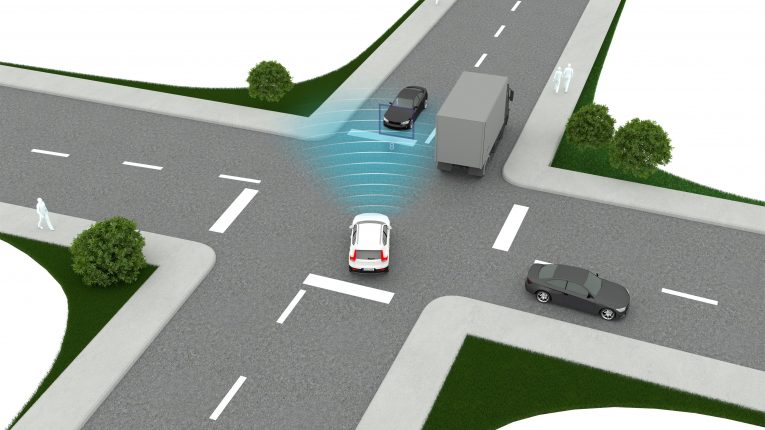
Revolution on the Road: Smart Driving & How Advanced Driver Assistance Systems (ADAS) Are Changing the Way We Drive
Drivers today are asking, ‘Smart driving: how Advanced Driver Assistance Systems (ADAS) are changing the way we drive?’ The answer lies within the realm of ADAS. These systems are altering our driving experience with innovative safety features, user-friendly interfaces, and a clear path towards autonomous vehicles. In this article, we’ll explore the fascinating evolution of smart driving and illuminate how ADAS is central to this transformation.
Understanding ADAS: The Future of Smart Driving
ADAS is not merely an accessory to your car; it’s a confluence of technologies that drastically enhances your driving experience. These systems utilize a combination of:
- Cameras
- Radars
- LIDARS
- Ultrasonic sensors
To give your vehicle a comprehensive understanding of its surroundings, it is essential to consider other vehicles as well. These elements work in harmony, processing data and offering a suite of features that not only make driving more intuitive but also significantly safer.
But ADAS technology is not just about the present. As we gaze into the future of the automotive industry, we see ADAS technologies at the forefront, forging the path towards fully autonomous vehicles. As we move towards this future, ADAS will continue to evolve, offering even more advanced driver assistance systems that further enhance the driving experience and mark the next step in our journey towards autonomous driving.
ADAS Technology and Its Role in the Automotive Industry
ADAS technology is driving a seismic shift in the automotive industry. The global Automotive Advanced Driver Assistance System (ADAS) market is projected to expand from USD 57320 million in 2023 to USD 86020 million by 2029. This growth is fueled by increasing consumer demand for safer and more efficient vehicles, as well as advancements in technology that enhance product quality and performance.
In regions like North America and Europe, stringent vehicle emissions standards and regulations are driving the adoption of ADAS technology. As key players continue to innovate and introduce new ADAS functionalities, the global ADAS market growth is expected to rise at a considerable rate until 2030. This adoption and expansion are set to transform the automotive industry, making ADAS a cornerstone of future vehicular advancements.
How ADAS is Reducing Driver Fatigue and Human Error
Human errors and driver fatigue are major factors in traffic accidents, and this is where ADAS comes in. By providing features like Driver Attention Monitoring and Lane Departure Warning, ADAS directly addresses these issues, helping to reduce driver fatigue and making our roads safer. When immediate action is required, ADAS can respond quicker than human reflexes, thereby reducing decision latency and enhancing safety.
Besides safety, ADAS also prioritizes comfort. By automating repetitive tasks, ADAS reduces driver fatigue, especially for professions like truck driving where long hours are common. Systems like automatic emergency braking and driver monitoring provide active assistance, compensating for momentarily lapses in a driver’s attention or concentration. In this way, ADAS is not just enhancing the driving experience but is also contributing significantly to road safety.
Essential Components of Advanced Driver Assistance Systems
An ADAS system is more than the sum of its parts. It’s a complex network of interconnected components that work together to provide a safer, more intuitive driving experience. Some of the key components of an ADAS system include:
- Cameras
- Radar
- Lidar
- Ultrasonic sensors
These components capture detailed information about the vehicle’s surroundings. This data is then processed by an Electronic Control Unit (ECU), which coordinates with the physical components like the brakes and steering to control the vehicle.
The interface systems allow for driver interaction, while data storage and internet connectivity enable updates and information sharing. Each component plays a vital role, and their seamless integration is what makes ADAS technology so powerful. The result is a system that not only assists drivers but also actively prevents accidents, transforming the way we drive and setting new standards in road safety.
Sensors and Cameras: The Eyes of ADAS
Sensors and cameras are the eyes of the ADAS, capturing accurate data on the vehicle’s surroundings and playing a crucial role in the system’s functionality. ADAS uses different types of cameras, each designed to perform specific functions. Some of these cameras include:
- Forward-facing cameras, which are vital for collision avoidance and lane-keeping
- Rear-view cameras, which help with parking and reversing
- Side-view cameras, which assist with blind spot detection and lane change assistance
These cameras work together to provide a comprehensive view of the vehicle’s surroundings and enhance driver safety.
These cameras work by capturing images that the ADAS systems process to identify and track objects. This information informs decisions about emergency interventions like braking or steering. With the capability to see in the dark and detect objects behind the vehicle, sensors and cameras significantly enhance the driver’s decision-making process, making driving safer and more intuitive.
Artificial Intelligence: The Brain Behind ADAS
Artificial Intelligence (AI) is the brain behind ADAS, enabling rapid and accurate responses to road conditions, surpassing human reaction times and reducing human error. AI-driven models process large volumes of data from sensors such as:
- cameras
- LiDAR
- radar
- ultrasonic devices
This allows them to avoid accidents and enhance navigation.
Deep learning techniques are utilized for tasks such as object detection and tracking, employing neural networks for accurate performance. Sensor fusion combines data from multiple sources, leading to a detailed environmental model and improving object identification and tracking for reliable ADAS operation.
By transforming analog visual information into digital data for real-time analysis, AI-supported camera systems facilitate functions like object detection and lane marking identification.
Popular ADAS Features and Their Benefits
ADAS is not a singular technology but a suite of features designed to enhance safety and convenience for drivers. Some popular ADAS features include:
- Forward Collision Warning (FCW) and Automatic Emergency Braking (AEB), which are essential in mitigating rear-end collisions and are particularly recommended for busy city streets.
- Lane Departure Warning (LDW), which alerts drivers if they unintentionally drift out of their lane.
- Lane Keeping Assist (LKA), which actively assists in maintaining lane discipline by detecting vehicles in blind spots.
- Blind Spot Monitoring (BSM), which detects vehicles in blind spots.
These features work together to provide a safer and more convenient driving experience.
Other notable ADAS features include the Rear Cross Traffic Alert (RCTA) and Traffic Sign Recognition (TSR). The RCTA enhances safety by monitoring the sides of the vehicle when reversing, alerting the driver to approaching vehicles or pedestrians, particularly in parking lots and during other backing maneuvers. The TSR, on the other hand, informs drivers of road signs and regulations, reducing the cognitive load and enhancing overall driver awareness.
Together, these adas features work to make ADAS a game-changer in enhancing the driving experience and road safety.
Adaptive Cruise Control (ACC)
Adaptive Cruise Control (ACC) is a standout feature of ADAS. It assists drivers in maintaining a safe distance from the vehicle ahead, adjusting speed as required, and providing particular benefits on highways. The ACC utilizes forward-facing cameras mounted near the rear-view mirror to gather visual data for speed monitoring and distance management. Some of the benefits of ACC include:
- Enhanced safety by automatically adjusting speed to maintain a safe distance from the vehicle ahead
- Reduced driver fatigue on long highway drives
- Improved fuel efficiency by optimizing speed and reducing unnecessary acceleration and braking
Radar sensors in ADAS systems play a crucial role in ACC. By emitting radio waves that reflect off objects to calculate distance, they create a 3D image of the surroundings. This data, coupled with the visual data from the cameras, allows the ACC to accurately maintain a safe distance from the vehicle ahead, enhancing safety and convenience for the driver.
Automatic Emergency Braking (AEB)
Another key feature of ADAS is the Automatic Emergency Braking (AEB). This function autonomously applies the brakes to prevent or mitigate a collision, particularly when a driver is distracted or reacts too slowly.
By providing an extra layer of safety, the AEB exemplifies the potential of ADAS technologies to transform our driving experiences and make our roads safer.
Parking Assistance
Parking Assistance is another feature of ADAS that simplifies the driving experience. It includes features like automatic parking, moving a vehicle from a traffic lane into a parking spot. Parking assistance provides drivers with a 360-degree view around the vehicle, utilizing side and rear-mounted cameras.
In addition, parking assist systems have several features that make parking safer and more convenient for drivers:
- Rearview cameras provide a clear view of the area behind the vehicle
- Parking sensors alert the driver to nearby objects
- Ultrasonic sensors help detect nearby objects and enable precise vehicle positioning within a parking space
The combination of these features works synergistically to simplify the parking experience and reduce parking-related mishaps.
Challenges and Limitations of ADAS
While ADAS has revolutionized the driving experience, it is not without its challenges and limitations. One of the key challenges is the accurate calibration of ADAS sensors and cameras, which is crucial for the system’s functionality and precision. Calibration involves a technical process with special equipment and trained technicians, and ADAS systems may need recalibration after events like windshield replacements, collision repairs, or due to performance issues caused by external factors.
Another challenge is the cost associated with implementing and maintaining ADAS systems. The advent of ADAS technology can raise the initial cost of vehicles, and these costs are forecasted to reduce as adoption of the technology expands. However, the requirement for regular and technical calibration of ADAS components can lead to increased costs for vehicle maintenance.
Sensor Accuracy and Weather Conditions
The performance of ADAS sensors can be affected by weather conditions. Some factors to consider are:
- ADAS sensors, including lidar, radar, and camera sensors, can struggle with accurately detecting small or fast-moving objects.
- Adverse weather conditions can also impact sensor performance.
- Rainfall, for example, can significantly affect the performance of systems like lane departure warning systems.
- Sensor visibility ranges decrease with higher vehicle speeds in adverse weather conditions.
It’s important to be aware of these limitations when relying on ADAS technology in different weather conditions.
In conditions of heavy rainfall or intense sunlight, ADAS features may fail to operate effectively due to reduced visibility range. Regular sensor calibration is crucial as it ensures the accuracy required for the correct functioning of ADAS features. Therefore, it is essential to certify ADAS systems through a thorough testing process that accommodates different terrains, light levels, weather conditions, and traffic systems.
Balancing Driver Assistance and Overreliance
Another challenge in the widespread adoption of ADAS is balancing the benefits of driver assistance with the potential for overreliance. Drivers might rely too much on ADAS features, potentially believing that they can fully replace human intervention. This dependency could lead to dangerous situations on the road. This could lead to a false sense of security, potentially neglecting their responsibility to remain alert and ready to take control in emergency situations.
A balanced approach is essential, where drivers harness the benefits of ADAS features while remaining actively engaged in the driving process. Although ADAS technologies offer advanced assistance, it’s important to remember that they are designed to assist drivers, not replace them. Therefore, maintaining driver alertness and readiness to intervene is critical to ensure safety and proper vehicle operation.
The Cost of Implementing ADAS
The cost of implementing ADAS represents a significant challenge for many vehicle owners. ADAS technology can initially raise the cost of vehicles, but these costs are forecasted to reduce as adoption of the technology expands. However, the demand for ADAS calibration services is on the rise as more vehicles integrate these systems, indicating a consequential cost for ongoing maintenance.
Repairs related to ADAS can be significant, with minor damages leading to expensive replacements or system recalibrations. The cost of repairing ADAS is exacerbated as many local repair shops lack the necessary equipment and training, pushing vehicle owners towards higher-cost specialized services. Additionally, advanced materials associated with ADAS are pricier to repair, further escalating repair expenses.
The Road Ahead: ADAS and the Future of Autonomous Driving
As we look towards the future, it’s clear that ADAS technologies are paving the way for a major transformation in the automotive industry. Autonomous driving holds the potential to significantly alter transportation, consumer behavior, and even societal structures. By allowing previously driving-focused time to be used for other activities, autonomous driving systems could offer safer, more convenient, and updated driving experiences.
The advent of SAE Level 4 autonomous vehicles that can operate driverlessly under specific conditions is set to stimulate consumer demand for advanced driving features. It’s projected that by 2030, around 15% of new cars sold will have the capability of full autonomy. ADAS and autonomous driving technologies could create a substantial economic impact, with estimates suggesting a market potential of $300 to $400 billion by 2035 for the passenger car sector.
How ADAS is Paving the Way for Autonomous Vehicles
In the evolution towards fully autonomous vehicles, ADAS represents a critical stage. ADAS is a key stepping stone in the transition from basic single-function driver assistance to systems capable of conditional driving automation, marking the incremental steps toward full vehicle autonomy. Vehicle design has evolved from focusing on individual components to creating integrated systems, blending physical parts with computers and software, which lays the groundwork for autonomous vehicle technology.
The high consumer interest in advanced driving features and their willingness to invest in these technologies underscore the market’s trajectory toward embracing fully autonomous vehicle systems. Higher levels of vehicle automation, such as L3 and L4 systems for highway driving, are anticipated to become widely available in the consumer market around 2025, signaling the progressive adoption of autonomous driving technologies.
Potential Road Safety Improvements with ADAS and Autonomous Driving
ADAS and autonomous driving technologies hold the potential to significantly improve road safety. By preventing accidents, ADAS technologies could save approximately 20,841 lives annually. The enhanced situational awareness provided by ADAS technologies supports drivers in making informed decisions, thus contributing to safer roads.
With the growing adoption of ADAS, road accidents in Europe could be reduced by approximately 15 percent by 2030, emphasizing the technology’s impact on road safety. As we move towards a future of autonomous driving, ADAS technology continues to evolve rapidly, promising to further enhance safety and transform our driving experiences.
ADAS in the Used Car Market
According to used car dealers Perth professionals, the prevalence of Advanced Driver Assistance Systems (ADAS) in new vehicles has begun to significantly influence the used car market. As more vehicles equipped with ADAS become off-lease or are traded in, the secondary market is seeing an influx of these high-tech cars. This shift is changing the expectations and purchasing considerations for used car buyers.
For those looking to purchase a used vehicle, the presence of ADAS features can be a major selling point. These systems, which include functionalities like adaptive cruise control, lane keeping assist, and automatic emergency braking, are no longer exclusive to luxury models or high-end trims. Instead, they are becoming more common in a wide range of vehicles, making advanced safety features accessible to a broader audience.
However, purchasing a used car with ADAS comes with its own set of considerations. Potential buyers need to be aware of the maintenance history of these systems, as proper functioning relies on precise calibration and software updates. It’s also crucial to verify that all ADAS features are operational during the pre-purchase inspection, as repairs can be costly.
The resale value of used cars may also be impacted by the ADAS features they possess. Cars with a comprehensive suite of ADAS technologies may hold their value better than those without, as demand for these safety features grows among used car buyers.
Dealerships and independent sellers alike are adapting to this trend by highlighting ADAS features in their listings and ensuring that their staff are knowledgeable about the benefits and operation of these systems. As ADAS becomes more prevalent, it is also becoming a key factor in the certification process for pre-owned vehicles.
In summary, ADAS is not only transforming new vehicle markets but is also having a profound impact on the used car industry. As technology advances and consumer awareness grows, ADAS-equipped vehicles are set to become the standard rather than the exception in the pre-owned market.
Summary
In conclusion, Advanced Driver Assistance Systems (ADAS) is transforming the way we drive, enhancing safety, reducing driver fatigue, and paving the way for fully autonomous vehicles. By blending a range of technologies, ADAS offers a suite of features that assist drivers and actively prevent accidents. However, as with any advanced technology, ADAS faces challenges, including sensor accuracy, overreliance, and high implementation costs. Despite these challenges, the future of ADAS looks promising, with its potential to significantly improve road safety and revolutionize the automotive industry.
Frequently Asked Questions
What is the future of ADAS?
The future of ADAS looks promising, with a growing number of consumers seeking vehicles equipped with ADAS features, which will drive automakers to integrate this technology into a broader range of vehicle models. Additionally, the global ADAS market is projected to grow substantially, reaching $78.6 billion by 2030, indicating a significant expansion in the industry.
What are the disadvantages of ADAS?
While ADAS systems offer many benefits, they can lead to over-reliance on technology, potential malfunctions, and high costs. It’s important to be aware of these challenges.
What are the trends in advanced driver assistance systems?
The future of advanced driver assistance systems (ADAS) lies in embedded vision, sensors, connectivity, automotive systems infrastructure, and automotive human machine interface (HMI) design. These are the key trends developers are focusing on to enhance ADAS capabilities.
What is the impact of advanced driver assistance systems?
The use of advanced driver assistance systems, such as adaptive headlights and night vision assist, could potentially prevent around 62% of road deaths, amounting to 20,841 lives saved annually.
What is ADAS and how does it enhance the driving experience?
ADAS, or Advanced Driver Assistance Systems, uses various technologies like cameras, radars, LIDARs, and ultrasonic sensors to enhance the driving experience by providing comprehensive understanding of the car’s surroundings, making driving safer and more intuitive.









